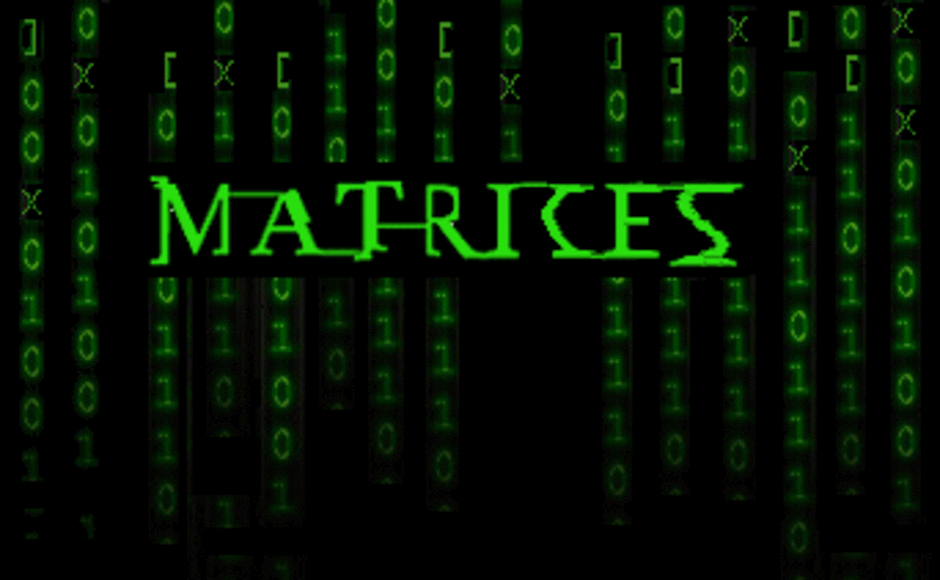1 Definition

Definition
A matrix is a rectangular arrangement of numbers.[1] For example,
An alternative notation uses large parentheses instead of box brackets:
The horizontal and vertical lines in a matrix are called rows and columns, respectively. The numbers in the matrix are called its entries or its elements. To specify a matrix's size, a matrix with m rows and n columns is called an m-by-n matrix or m × n matrix, while m and n are called its dimensions. The above is a 4-by-3 matrix.
A matrix where one of the dimensions equals one is also called a vector, and may be interpreted as an element of real coordinate space. An m × 1 matrix (one column and m rows) is called a column vector and a 1 × n matrix (one row and n columns) is called a row vector. For example, the third row vector of the above matrix A is
Most of this article focuses on real and complex matrices, i.e., matrices whose entries are real or complex numbers. More general types of entries are discussed below.
[edit] Notation
Matrices are usually denoted using upper-case letters, while the corresponding lower-case letters, with two subscript indices, represent the entries. In addition to using upper-case letters to symbolize matrices, many authors use a special typographical style, commonly boldface upright (non-italic), to further distinguish matrices from other variables. An alternative notation involves the use of a double-underline with the variable name, with or without boldface style, (e.g.,  ).
).
The entry that lies in the i-th row and the j-th column of a matrix is typically referred to as the i,j, (i,j), or (i,j)th entry of the matrix. For example, (2,3) entry of the above matrix A is 7. For example, the (i, j)th entry of a matrix A is most commonly written as ai,j. Alternative notations for that entry are A[i,j] or Ai,j.
An asterisk is commonly used to refer to all of the rows or columns in a matrix. For example, ai,∗ refers to the ith row of A, and a∗,j refers to the jth column of A. The set of all m-by-n matrices is denoted M(m, n).
A common shorthand is
- A = [ai,j]i=1,...,m; j=1,...,n or more briefly A = [ai,j]m×n
to define an m × n matrix A. Usually the entries ai,j are defined separately for all integers 1 ≤ i ≤ m and 1 ≤ j ≤ n. They can however sometimes be given by one formula; for example the 3-by-4 matrix
can alternatively be specified by A = [i − j]i=1,2,3; j=1,...,4.
Some programming languages start the numbering of rows and columns at zero, in which case the entries of an m-by-n matrix are indexed by 0 ≤ i ≤ m − 1 and 0 ≤ j ≤ n − 1.[2] This article follows the more common convention in mathematical writing where enumeration starts from 1.
ความเห็น (0)
ไม่มีความเห็น



